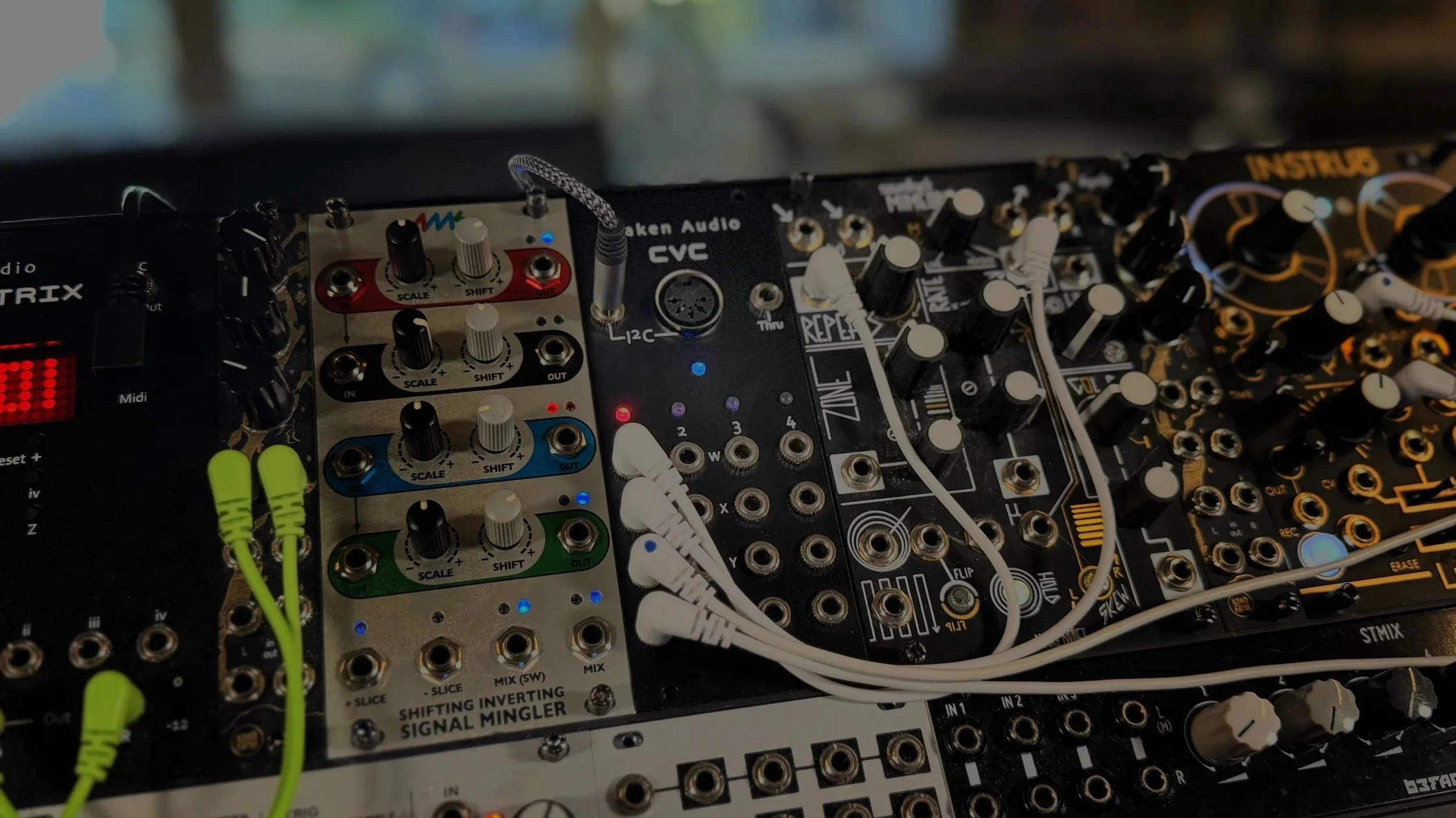Before the CVC
Even before the CVC, it was possible to control analog synths using Continuum Midi output through a standard Midi-CV converter. It can work pretty well, but in practice it is very hard to set up everything optimally for the Continuum. The data coming from the Continuum is standard Midi, but it is so unlike a keyboard and other MPE controllers that most people were getting their Midi-CVs set up “almost right”, not “exactly right”. From Haken Audio’s point of view it was very frustrating, because so much time and effort was spent perfecting the Continuum’s Midi functionality. Typical problems people had with Midi-CVs were: the Continuum response is sluggish, or the Continuum is not correctly in tune, or slight zipper/buzzing noises in the control signals, etc. And mostly people would think “that’s just the way the Continuum is”, and do not realize the problem is in the Midi-CV configuration.
A Dedicated Hardware Device
The CVC was developed so that analog synth people could concentrate on their Continuum playing technique and on their sound patches — and not spend so much time and effort messing with a Midi-CV. The CVC is as good a product as Haken Audio can currently design. The CVC is perfected for the Continuum and works with Continuums, ContinuuMinis, EaganMatrix Modules, and Osmose; the CVC does not support other Midi devices. Controlling an analog synth from other Midi controllers besides the Continuum will still require a standard Midi-CV. Controlling an analog synth from a Continuum via the CVC will give one the best possible response time and accuracy.
CVC versus Midi – A Case Study
The Moog Voyager is a wonderful-sounding analog synth. It has two methods to control this sound engine externally, analog control voltages and Midi. In fact both can be used at the same time if one wishes.
Below are two sound files, one controlling the Voyager via control voltage from the CVC and the other via Midi. For these audio examples the same basic patch on the Voyager was used. The sound patch has a fast percussive blip at the beginning of its filter and volume amplitude to accentuate the attack phase of a note shape.
Control Voltage (CVC) version
CVC control setup:
Gate = Filter and Volume envelope gates
X = pitch via the CV pitch input
Y = nothing
Midi version
Midi Control setup (direct cabling from the Continuum Midi output to the Voyager Midi input):
Gate = generated as a Midi Note-On when Z becomes non-zero, Midi velocity at 127
X = Pitch
Y = nothing
Z = Volume control by sending Midi CC messages
Observations
No matter how fast the Continuum is played the percussive attack is slower via Midi than via the CVC. This is due to Midi data smoothing in the Voyager, and not a speed or accuracy problem with Midi. The Voyager’s smoothing is preventing its VCA from responding to fast changes in the Midi CC data, thus the percussive attacks are lost. In a typical Midi situation, the CC data might be generated by a low-accuracy slider with slow update rate, and the Voyager’s smoothing would be appropriate. But here the Continuum is trying to use the Midi CC data to generate fast transitional changes in the amplitude of a single note. This is an example of how Midi implementation in a synth has been optimized for one purpose, preventing from being used in the more esoteric way that something like the Continuum requires. This problem is not resolved using MPE; MPE does not indicate differences in controller precision and cc rates (see MPE+ page). Fortunately a sophisticated analog synth like the Voyager has both Midi and control voltage paths for controlling its sound parameters.
